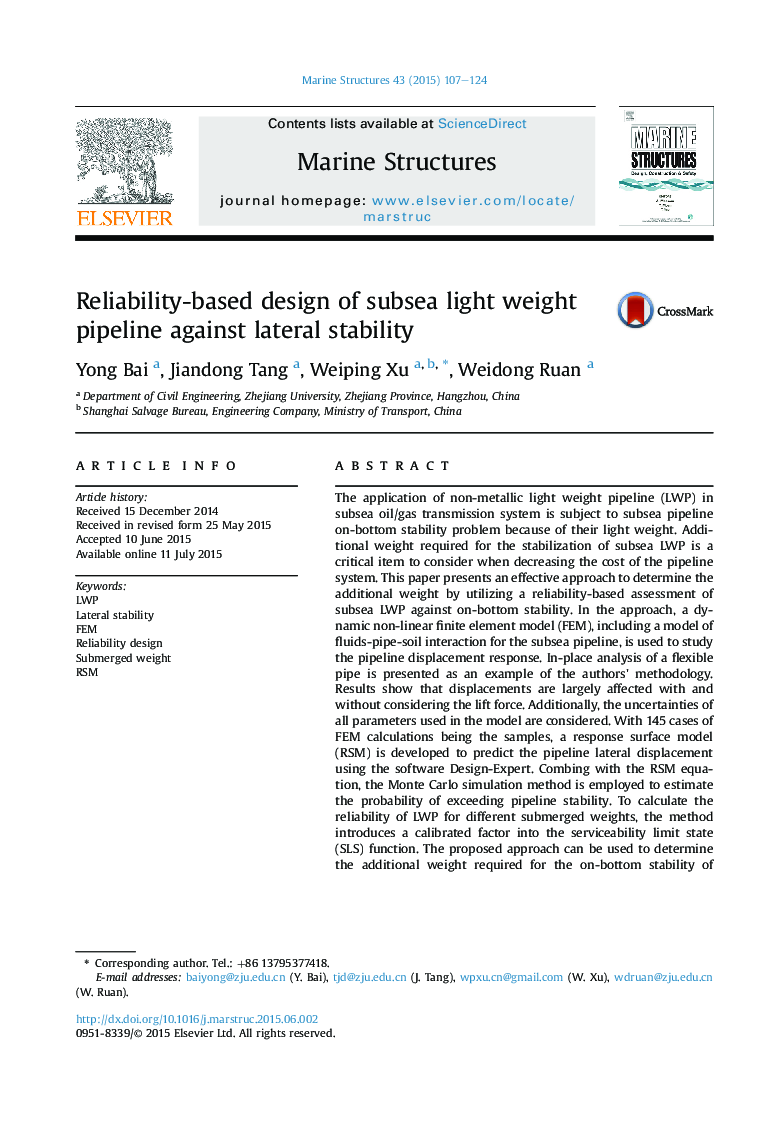| Article ID | Journal | Published Year | Pages | File Type |
|---|---|---|---|---|
| 294225 | Marine Structures | 2015 | 18 Pages |
•A dynamic model is used to address the stability analysis of pipeline with considering fluids-pipe-soil interaction.•Using FEM calculation results, a response surface model (RSM) is developed to predict the pipeline displacement.•Combing with the RSM equation, the Monte Carlo simulation method is used to calculate the safety indices.•A calibrated factor is introduced into the serviceability limit state (SLS) function to calculate the failure probability.•Additional weight required for the on-bottom stability can be determined to meet the target levels of failure probability.
The application of non-metallic light weight pipeline (LWP) in subsea oil/gas transmission system is subject to subsea pipeline on-bottom stability problem because of their light weight. Additional weight required for the stabilization of subsea LWP is a critical item to consider when decreasing the cost of the pipeline system. This paper presents an effective approach to determine the additional weight by utilizing a reliability-based assessment of subsea LWP against on-bottom stability. In the approach, a dynamic non-linear finite element model (FEM), including a model of fluids-pipe-soil interaction for the subsea pipeline, is used to study the pipeline displacement response. In-place analysis of a flexible pipe is presented as an example of the authors' methodology. Results show that displacements are largely affected with and without considering the lift force. Additionally, the uncertainties of all parameters used in the model are considered. With 145 cases of FEM calculations being the samples, a response surface model (RSM) is developed to predict the pipeline lateral displacement using the software Design-Expert. Combing with the RSM equation, the Monte Carlo simulation method is employed to estimate the probability of exceeding pipeline stability. To calculate the reliability of LWP for different submerged weights, the method introduces a calibrated factor into the serviceability limit state (SLS) function. The proposed approach can be used to determine the additional weight required for the on-bottom stability of subsea pipelines while considering the uncertainties of all relevant parameters.
